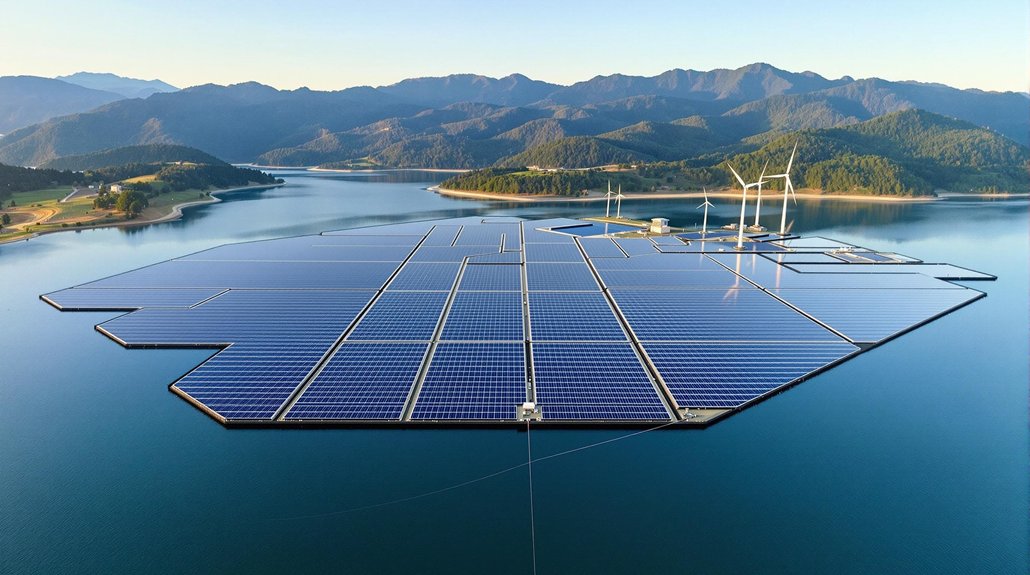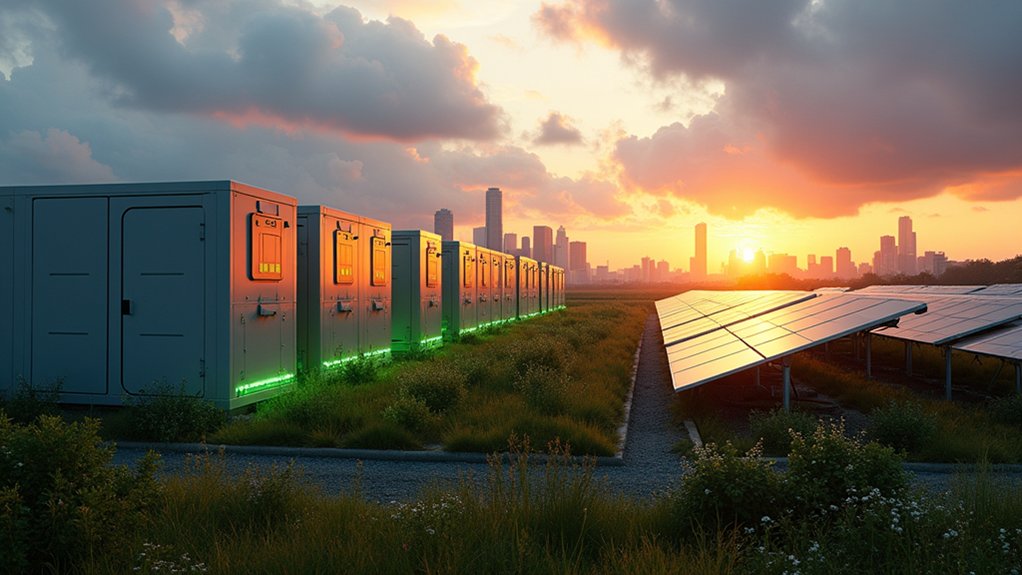Japan leads in floating solar technology with 73 of the world’s 100 largest installations. These water-based systems generate 246 megawatts of clean electricity while being 16% more efficient than land-based panels. The Yamakura Dam facility alone powers nearly 5,000 homes and saves 8,000 tonnes of CO2 annually. Japan’s also developing floating offshore wind energy systems. This sea-based approach offers a smart solution to land constraints.
How is Japan tackling its energy challenges with limited land space? The nation is turning to its abundant water resources, creating innovative floating green technologies that produce renewable energy without using scarce land.
Japan pioneered floating solar power, building the world’s first plant in Aichi Prefecture. Today, the country hosts 73 of the world’s 100 largest floating solar installations, generating 246 megawatts of clean electricity. The largest facility at Yamakura Dam provides power to nearly 5,000 homes while saving over 8,000 tonnes of carbon dioxide emissions each year.
Japan leads the global floating solar revolution with 73 major installations generating clean power while saving thousands of tonnes of CO₂.
Hyogo Prefecture has become a global leader in this technology, containing almost half of the world’s largest floating solar capacity across its 40,000 lakes. These installations do more than generate power – they reduce water evaporation from reservoirs and prevent algae growth by blocking sunlight.
Japan isn’t stopping with solar. The country is also developing floating offshore wind energy systems that take advantage of stronger, more consistent wind patterns at sea. These modern offshore turbines can generate up to 15 MW each, significantly increasing energy output potential. These floating platforms avoid land-use conflicts entirely by operating in marine zones. Floating solar systems offer up to 16% more efficiency than their land-based counterparts due to the cooling effect of water.
Technology advancement is accelerating through generative design, which uses computer simulations to test ideas virtually. This approach has cut prototype development time from six months to just two months and created more durable, efficient structures for floating panels.
The economic benefits are significant. These technologies create jobs in construction, maintenance, and research while reducing Japan’s dependence on imported energy. Local communities benefit from lower energy costs, and Japan’s green tech industry gains export opportunities.
Challenges remain, including high initial costs and the need for better safety regulations. Grid integration also poses technical hurdles for engineers.
Despite these obstacles, Japan’s floating green technologies represent a promising solution not just for the island nation but for land-scarce regions worldwide.
As climate concerns grow, Japan’s innovative approach shows how countries can leverage their unique geography to create sustainable energy solutions that work with nature rather than against it. This sustainable approach is especially important as clearing forests for ground-mounted solar systems would contradict zero-carbon initiatives.









